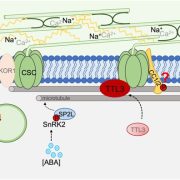
Review: The cell biology of primary cell walls during salt stress (Plant Cell)
Plant Science Research WeeklySalt is a massive problem for most land plants. At the macroscopic level, excess soil salinity can cause stunting or death. At the molecular / cellular level, salinity causes both osmotic and ionic challenges that affect membrane homeostasis, molecular interactions, and protein stability. A new review…
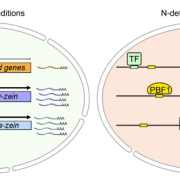
Nitrogen-dependent binding of the transcription factor PBF1 contributes to the balance of protein and carbohydrate storage in maize endosperm (Plant Cell)
Plant Science Research WeeklyThe majority of maize endosperm is made of starch (70%) and proteins (10%) and their biosynthesis is a complex process which involves many enzymes. N-containing compounds, such as enzymes, amino acids, and nucleotides are crucial for C metabolism. Thus, when N levels are altered, the storage of proteins…
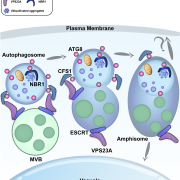
New insights into how plant cells traffic proteins into the vacuole: Role of the amphisome (J. Cell Biol.)
Plant Science Research WeeklySome of the most fascinating questions in biology, subject to numerous Nobel Prizes, center on how all the parts of a eukaryotic cell are spatially and temporally coordinated, to allow the plethora of often incompatible functions to occur in harmony. Studies in three major systems, yeast, metazoans,…
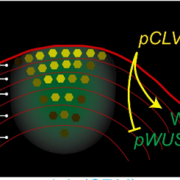
Concentration-dependent transcriptional switching through a collective action of cis-elements (Sci. Adv.)
Plant Science Research WeeklyOne of the well-known molecular pathways that regulate plant development is the one formed by the homeobox transcription factor WUSCHEL (WUS) and the secreted peptide CLAVATA 3 (CLV3). In the shoot apical meristem (SAM), WUS expression is constrained to the organizing center where it maintains the stem…

Drought resistance or yield? In search of gold, we lost the diamond (Mol. Plant)
Plant Science Research WeeklyArtificial selection has significantly increased crop yield. However, this has come at the cost of compromising abiotic stress tolerance. Stomatal aperture has an important role in abiotic stress tolerance. Abiotic stress induces stomatal closure and involves the intracellular production of reactive…
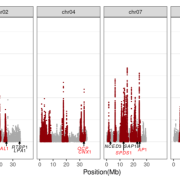
Hybrid-derived weedy rice maintains adaptive combinations of alleles associated with seed dormancy (Mol. Ecol.)
Plant Science Research WeeklyThe cross between genetically distant parents is an essential source of genetic variation. This process, known as hybridization, might result in the loss of adaptive gene combinations due to the introduction of non-adaptive alleles. However, Imaizumi and colleagues show this is not the case with weedy…
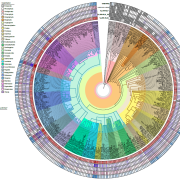
Concerted expansion and contraction of immune receptor gene repertoires in plant genomes (Nature Plants)
Plant Science Research WeeklyPlant immunity is crucial for adaptation to pathogen attack and subsequent survival. Two systems support plant immunity. Cell-surface pattern-recognition receptors (PRRs) recognize pathogen-associated molecular patterns (PAMPs) and prompt pattern-triggered immunity. Intracellular nucleotide-binding leucine-rich…
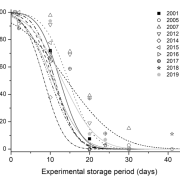
Two decades of climate change alters seed longevity in an alpine herb (Alp. Res.)
Plant Science Research WeeklyAlpine ecosystems are particularly vulnerable to climate change since they are experiencing swift temperature increases and rainfall reduction. These changes have been shown to affect different aspects of plant life history, such as phenology and germination. In this exciting research, White and colleagues…

Plant Science Research Weekly: November 4, 2022
WWR Full PostUpdate: Plant energy expenses: How to stretch the C budget
Balancing the books means making sure that expenses don’t exceed income. In terms of a plant’s energy budget, most of the input comes from carbon fixed during photosynthesis. The output is much more diverse. Some fixed carbon is used for…

